Ghost Towns in Colorado?
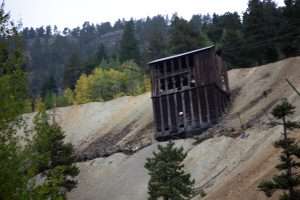
Where are they, what are they and why should you visit them? Colorado is known for its mining history. Beginning as far back as the 1700’s, Colorado was famous for gold and silver mines all over the state. As a result, there are several fascinating ghost towns scattered throughout the state. The history of these towns is rich and fascinating with a cast of characters to discover. Here are just a few of the ghost towns to visit in Colorado.
St. Elmo

St. Elmo was originally named Forest City but was later changed because of many towns with the same name. The name St. Elmo was chosen by Griffith Evans, one of the founding fathers.
The town was at its peak in the 1890s, when it included a telegraph office, general store, town hall, five hotels, saloons, dance halls, a newspaper office, and a school house. ] The Denver, South Park and Pacific Railroad line ran through St. Elmo. There were 150 patented mine claims within St. Elmo. A few of the mines in the area were, the Mary Murphy, Teresa C., The Molly and the Pioneer Mines. The Mary Murphy Mine was the largest and most successful mine in St. Elmo. The Mary Murphy Mine recovered over $60,000,000 worth of gold while it was in operation. While the other mines eventually shut down, the Mary Murphy Mine continued to operate until the railroad was abandoned in 1922.
Just as happens with many small mining towns, once the mining industry shut down, St. Elmo drastically declined in population. The business district in St. Elmo closed down as well. Few people continued to live in the town. Postal service was discontinued in 1952 after the death of St. Elmo’s postmaster.
Though a few people still live in St. Elmo, it is considered a ghost town. Located 20 miles south of Buena Vista, you will enjoy exploring one of Colorado’s best preserved Ghost towns. It is also listed on the National Register of Historic Places.
Independence
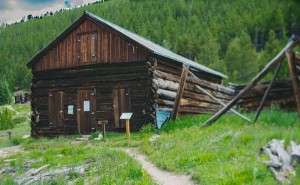
Independence was the first mining site in the Roaring Fork Valley where prospectors discovered the Independence Gold Lode on July 4, 1879.
A tent city became visible by the summer of 1879, and by 1880 there were 300 people living in the camp. Although mining at Independence was short lived, over $190,000 worth of gold was produced between 1881 and 1882. The next year production dropped to $2,000. By 1888, only 100 citizens remained in the high mountain town.
Around 1975, Aspen Historical Society was granted a permit by the United States Forest Services to maintain the ghost town site, and it was also added to the National Register of Historical Places which helped protect the remaining structures under federal law.
Located just below the Continental Divide, the ghost town is a “must see stop” on Independence Pass along the Top of the Rockies’ Scenic Byway. Located only 16 miles east of Aspen on Highway 82, Independence is the perfect excursion for a morning or afternoon exploration.
Capitol City
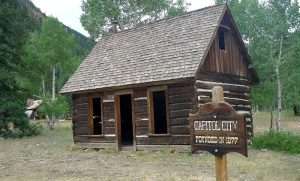
The town of Capitol City was incorporated in 1879 and was growing. At its peak, it consisted of two stores, several hotels and restaurants, saloons, a post office, approximately 100 cabins, smelters, a sawmill, and a schoolhouse. A stagecoach ran to Lake City and to Animas Forks. Mail service operated daily from Lake City from April through September but only once weekly from October through March. The population peaked at 400.
Capitol City continued to hang on through the murky mining years, but its population declined, and by 1885, it was home to only about 100 people. By 1930 Capitol City had become a ghost town.
Today, the old mining camp features only the old post office and a Smelter Stack. Aspen, mountain willows, and evergreen trees have reclaimed the rest of the townsite. Several private homes and vacant parcels of private property are in the Capitol City area. These private homes and lands are not to be toured.
Capitol City is located at the forks of Henson Creek, nine miles west of Lake City.
Animas Forks

Situated high in the San Juan Mountains, Animas Forks was once a thriving mining town. By 1876 Animas Forks had become a bustling mining community. At that time the town contained 30 cabins, a hotel, a general store, a saloon, and a post office. By 1883, 450 people lived in Animas Forks and in 1882 a newspaper, the Animas Forks Pioneer, began publication and lasted until October 1886. Every fall the residents of Animas Forks migrated to the warmer town of Silverton, Colorado. In 1884 a 23-day blizzard inundated the town with 25 feet of snow; the residents had to dig tunnels to get from building to building. Mining, speculation and processing mills helped Animas Forks grow.
Today, visitors can explore the well-preserved structures, such as cabins, a jail, and a boarding house. The town sits amid a picturesque backdrop, surrounded by rugged jagged mountains and stunning alpine scenery.
The site is a wonderful tourist attraction. In 2011 the townsite was listed on the National Register of Historic Places which provided additional funding.
The nine standing buildings within the Townsite have been stabilized and restored, repairing floors, walls, windows, and doors. The jail structure, the oldest building on the site, has had it gable roof reconstructed.
Animas Forks is located about 12 miles northeast of Silverton, Colorado.
Ashcroft
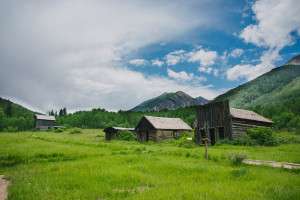
Located eleven miles up Castle Creek Road among spectacular alpine meadows at the headwaters of Castle Creek, the former silver mining ghost town features the restored remains of several historical buildings, including a saloon, post office, and hotel.
The little town of Ashcroft was considered a little boom town that once rivaled Aspen. As quickly as it boomed, Ashcroft went bust. The mines, which initially produced an amazing 14,000 ounces of silver to the ton, became shallow deposits. Promised rail links to Crested Butte never materialized. Major strikes in Aspen, already the county seat, lured away investors and workers. By 1885 there were just 100 summer residents.
Only a handful of aging, single men made Ashcroft their home by the turn of the century. They all owned mining claims, but spent their time hunting, fishing, reading and drinking in Dan McArthur’s bar.
In 1974, Ashcroft became a National Register Historic Site, and Aspen Historical Society received the first USFS permit ever granted to a historical society to preserve and interpret a ghost town.
Ashcroft is located 11 miles up Castle Creek Rd. from the roundabout at the west entrance to Aspen.
Victor

Gold was discovered in Victor in the late 19th century. With Cripple Creek, the mining district became the second largest gold mining district in the country and realized approximately $10 billion of mined gold. It reached its peak around the turn of the century when there were about 18,000 residents in the town. Depleted mines, labor strife and the exodus of miners during World War I caused a steep decline in the city’s economy.
While not entirely abandoned, Victor is a former gold mining town that has retained much of its historic charm. Visitors can explore the main street, lined with beautifully restored buildings and storefronts. The town offers a fascinating mix of old and new, and offers some active mining operations still in operation today in the area.
Victor holds a festival every year (usually held in the summer) called Gold Rush Days. It boasts great food, entertainment, talent show, dance, children’s activities and many other fun adventures. Approximately 70 miles by car from Colorado Springs, Victor is a ghost town not to be missed.
Gothic
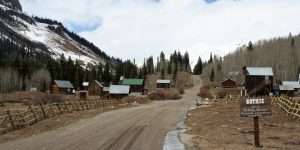
Located in Gunnison County, Gothic was a silver mining town that eventually transformed into the site of a research facility, the Rocky Mountain Biological Laboratory.
Gothic was a mining town with several silver mines dotting the landscape. An 1879 explosion in the area spread strands of “wire-silver” into the fields, attracting prospectors. It peaked in the late 1800’s with about 1000 locals, and boasted its own U.S. Post Office between 1879 and 1896. In its busiest times, there were around 200 buildings.
A handful of original structures remain in this picturesque, but almost deserted town. A few current residents call it home today. Students spend the summer here studying the local ecosystem.
Summertime is the favorite season to visit. If you are a mountain biker, you will love the 14-mile 401 Trail, which surrounds the ghost town. It is one of Colorado’s finest mountain biking trails. The area of Gothic has a unique atmosphere and offers beautiful hiking trails, wildflowers, and a visitor center that provides insight into the town’s history.
Located approximately 8 miles from Crested Butte, Gothic is the perfect outing for anyone who enjoys exploring ghost towns.
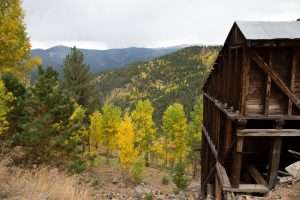
These are just a few of the many ghost towns worth exploring in Colorado. Take a camera. You won’t want to miss the history that each town has to offer. Each one offers a glimpse into the state’s mining heritage and provides a wonderful experience for those who love history. Remember to check local regulations and visitor information before planning your trip, some may require a fee to enter and access to some areas may be restricted or seasonal. For more information and to see other towns you may want to consider, go to the official Colorado Ghost Towns website.
Until next time!


